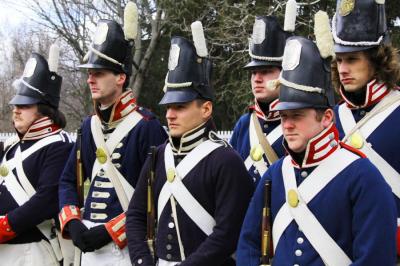On Dec. 13, 1813, the red glow in the sky could be seen from as far away as St. Davids.
The smell of the smoke came shortly thereafter.
Word soon arrived, the town of Niagara (now NOTL) was being burned to the ground by the retreating American forces.
Many wondered just what could have justified this heinous act by the Americans, who had been occupying the town and region for over seven months. War at this time was supposed to only involve fighting armed men, not women and children.
The town of Niagara had been invaded by the Americans on May 27, 1813, and they occupied the town until December.
The town’s people, mostly women, children, the elderly and infirm, had to suffer the unwanted visitors who took over homes.
For the most part, the American soldiers paid for everything, as looting was not permitted within the town. However, the outlying farms were not so lucky.
It might seem that the American forces should have been satisfied with their occupation of the town but in fact the strategy of the American government was to use Fort George as a launching centre to gain total control over the Great Lakes.
Taking Fort George did cut off the portage of supplies of the British from Lake Erie and the Detroit Frontier. Seizing Burlington Heights would effectively cut off the secondary portage route that was from Burlington to the Grand River.
British forces retreating from the Battle of Fort George (May 27, 1813), under Maj.-Gen. John Vincent, had made their way to Burlington Heights where they were encamped.
Burlington Heights was a naval supply hub on Lake Ontario (where Dundurn Castle is located).
Word came to Vincent that the American forces, who were in pursuit of the British, had reached Stoney Creek.
The British launched a bold attack, at night. The Battle of Stoney Creek, on June 6, 1813, was a dismal failure for the American forces who suffered a great loss.
Although York had been taken by the Americans on April 27, 1813, it had been abandoned after three days of occupation.
It was part of the American strategy that once Burlington Heights was taken, they would march to York and it would once more be theirs.
The frustrated American forces, after their defeat at Stoney Creek, had to retreat to Niagara. Although York was attacked by the Americans twice more in the summer of 1813, it was never occupied by them permanently.
The Battle of Beaver Dams was another failed attempt by the Americans, thanks to Laura Secord, who famously walked from Queenston through St. Davids and on to Beaver Dams to advise Lt. James Fitzgibbons of a planned attack by the Americans.
On June 24, 1813, with 500 American soldiers advancing on Beaver Dams, 300 Indigenous allies surrounded them.
The Americans’ fear of capture by Indigenous warriors prompted them to willingly surrender to Fitzgibbons and his 50 regular British soldiers.
A sad fact is that Fitzgibbons was given credit for this win when in fact it was John Norton and the Indigenous men who were engaged against the Americans and had won – not the British soldiers.
During the summer of 1813, the battle for control of Lake Ontario became a cat and mouse game between the British and American naval fleets.
There were small skirmishes back and forth, ships built, ships lost, but no clear victory for either side. The Americans became more frustrated with their lack of victory on the lake.
That became apparent when, in August of 1813, St. Andrew’s Presbyterian church was burned down by the Americans. They claimed British troops were using the bell tower to spy on the town. The church we see today was built in the 1830s.
Two more battles, this time at the eastern end of Lake Ontario and into the St. Lawrence River, also were failures for the Americans.
The first was Oct. 26, 1813, the Battle of the Chateauguay. The second was the Battle of Chrysler Farm (near Cornwall, Ont.) on Nov. 11, 1813.
With these two losses Montreal would not be captured by the Americans. The British would remain in control of the St. Lawrence River.
Next: Frustrated American forces grew weary of being defeated by the British and their allies.
I would like to thank Ron Dale and the Niagara-on-the-Lake Museum for their continued support when researching my articles.
More Niagara’s History Unveiled articles about the past of Niagara-on-the-Lake are available at: www.niagaranow.com











